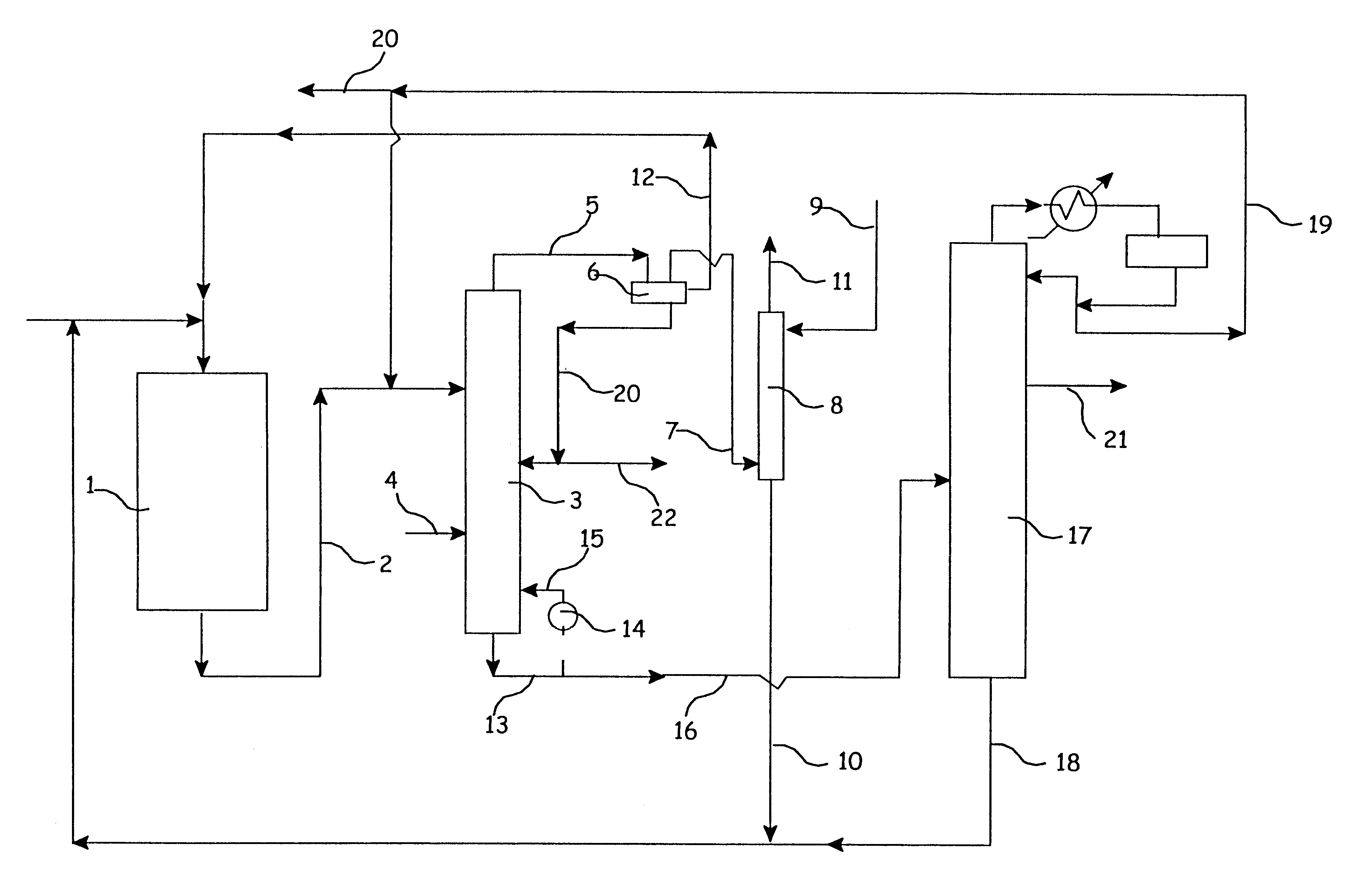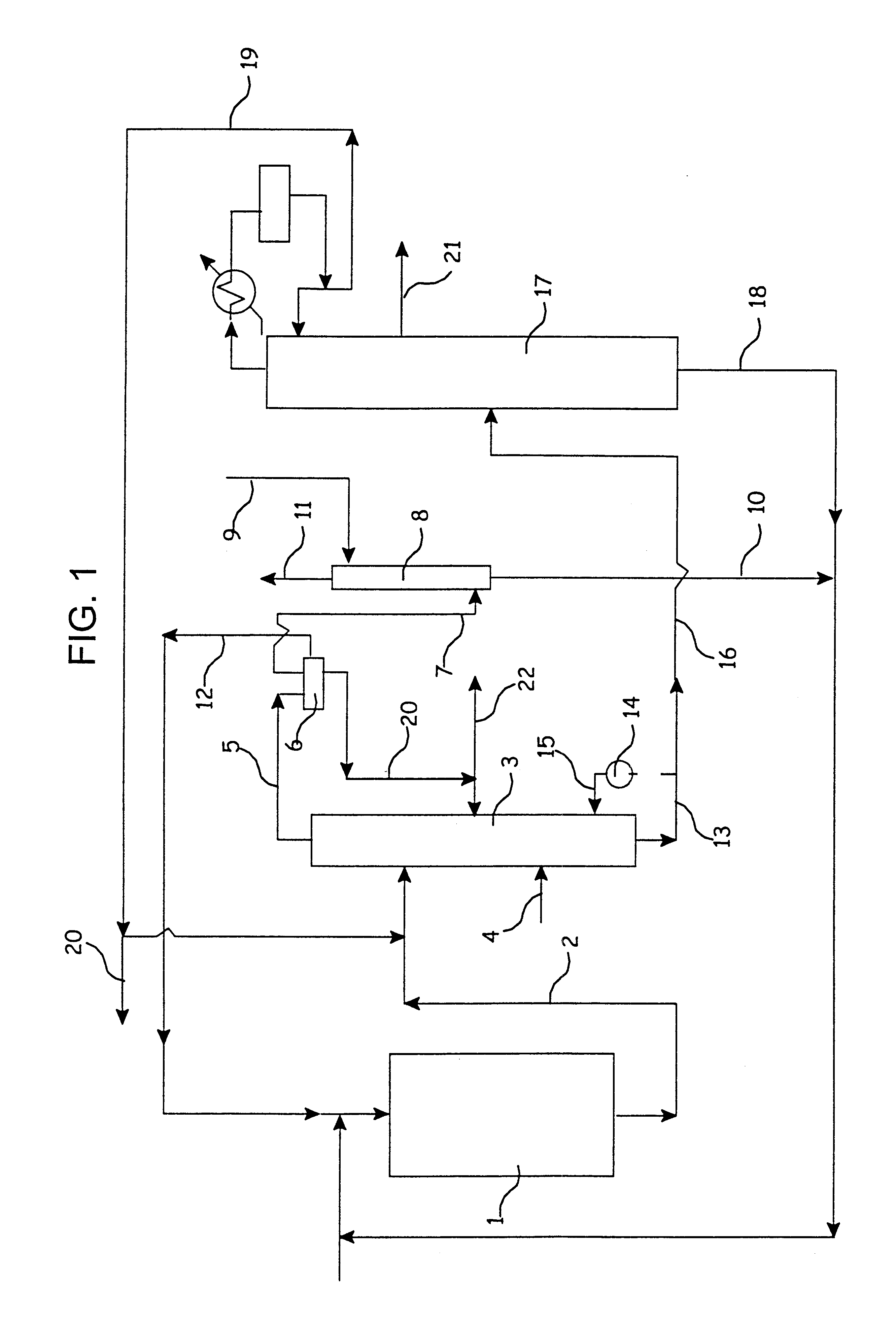Purification process
- Summary
- Abstract
- Description
- Claims
- Application Information
AI Technical Summary
Benefits of technology
Problems solved by technology
Method used
Image
Examples
example 2
This example illustrates the removal of di-ethylene glycol di-ethyl ether (DEDE) from a blend of diethylene glycol (DEG), di-ethylene glycol mono-ethyl ether (DEME), and di-ethylene glycol di-ethyl ether.
A stream comprised of 72.5% DEG, 2.5% DEDE and 25% DEME at 280.degree. F. is introduced to the top section of a distillation column with 40 stages of packing; at a rate of 1000 lbs / hr. Water at 212.degree. F. is introduced to the bottom section of the column at a rate of 50 lb / hr. Bottoms temperature is maintained at 380.degree. F. while the temperature at the top of the column is 336.degree. F. An overhead vapor stream is taken from the top of the column to a condenser at a rate of 350 lbs / hr and, after condensation, the condensate is separated into two liquid phases. The lighter organic phase is withdrawn at a rate of 205 lbs / hr and contains 21% water, 12% DEDE and 67% DEME. The heavier, aqueous phase containing 60% water, 0.4% DEDE, 1.2% DEME and 38% DEG is returned to the bottom...
PUM
 Login to View More
Login to View More Abstract
Description
Claims
Application Information
 Login to View More
Login to View More - R&D
- Intellectual Property
- Life Sciences
- Materials
- Tech Scout
- Unparalleled Data Quality
- Higher Quality Content
- 60% Fewer Hallucinations
Browse by: Latest US Patents, China's latest patents, Technical Efficacy Thesaurus, Application Domain, Technology Topic, Popular Technical Reports.
© 2025 PatSnap. All rights reserved.Legal|Privacy policy|Modern Slavery Act Transparency Statement|Sitemap|About US| Contact US: help@patsnap.com


